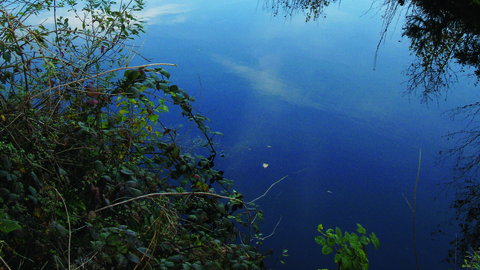
Bowness on Solway
Location
OS Map Reference
1:50,000. Sheet no.85Grid reference: NY 206 617
Getting here
By car:
From the B5307 the reserve entrance is from the track near Biglands House approximately 1.25km/0.75 miles from Bowness on Solway village.
By bicycle:
The reserve is on National Route 72 Hadrian's Cycleway.
By public transport:
Buses run from Carlisle to Bowness-on-Solway village.
View on What3Words
Know before you go
Dogs
When to visit
Opening times
Open all year roundBest time to visit
All year roundAbout the reserve
Wildlife highlights
- Numerous species of butterfly including ringlet, small copper, large skipper and peacock
- Enjoy the sound of willow warblers, willow tits and linnets in the spring
- Look out for Britain’s largest dragonfly, the emperor, alongside four-spotted chasers, common hawkers, southern hawkers and darters. You can also see several species of damselflies such as common blue, azure and emerald.
- In spring - a good time to see flocks of migrating birds whilst frogs, toads and newts are at their most active in the ponds.
- In summer - over twenty species of butterfly can be seen and damsel and dragonfly patrol the ponds.
- In autumn - look out for fungi and watch birds feasting on haws and thistles.
- In winter - a good time to see birds such as barn owl, kestrel, sparrowhawk and buzzard.
A varied landscape
Wildlife has recolonised this former gravel quarry at remarkable speed. Now, ponds ranging from temporary pools to open water are surrounded by scrub and grassland.
What makes Bowness-on-Solway so special?
Specialist water plants such as branched bur-reed, yellow iris and distinctive smelling water mint are found around the ponds, and in spring they’re alive with great crested newts, frogs and toads.
Striking dragonflies and damselflies add to the vibrant pondlife during the summer.
The gorse, thorn and willow scrub is a great habitat for breeding birds: several species of warbler have been recorded, as well as willow tit and bullfinch.
Flocks of redwing and fieldfare feed on hawthorn berries as they provide a rich winter food source.
In turn, the grassland flowers provide nectar for a wide range of insects.
Wildlife around the ponds
The ponds are a major feature of the reserve and range from temporary pools to permanent open water. Around the ponds you can find specialist water plants such as branched bur reed, yellow iris and distinctive smelling water mint.
In spring the ponds are alive with great crested newts, frogs and toads which breed in the ponds.
From late spring through to autumn look out for dragonflies such as the emperor, which is the largest dragonfly in Britain, and also four spotted chasers, common hawker, southern hawker and darters.
You can also see several species of damselflies such as common blue, azure and emerald.
Some of the ponds have recently been re-excavated to begin the process of colonisation again.
Good habitat for birds
Gorse, thorn and birch scrub grow on the drier areas and willow scrub in the wetter areas. This scrub mix provides an excellent habitat for breeding birds.
In spring you can enjoy the sounds of willow warbler, willow tit and linnet and other song birds.
In autumn and winter you might see wintering flocks of field fares and redwings feeding on the hawthorn which provides a rich winter food source. You may also see flocks of goldfinch feeding on the thistles. Winter is a good time to see birds such as the barn owl or the hen harrier or even woodcock.
Grassland plants
In the open grassland areas you can find common spotted orchid, bird's-foot trefoil, tomentil and bedstraw.
Later in the summer the grassland is a blaze of purple knapweed. Some of these areas are grazed in autumn and winter to encourage greater species diversity. The flowers provide nectar for a range of insects.
Butterflies and moths
The knapweed is very attractive to some species of butterfly. Sunny days in late summer are a good time to see butterflies such as ringlet, small copper, large skipper and peacock.
Keeping it special
The nature reserve was given to Cumbria Wildlife Trust in 1977 by Tilcon.
Species
- Peacock
- Common darter
- Linnet
- Ringlet
- Small copper
- Large skipper
- Emperor dragonfly
- Willow warbler
- Willow tit
- Four-spotted chaser
- Bullfinch
- Redwing
- Fieldfare
- Common Hawker
- Southern hawker
- Common blue damselfly
- Azure damselfly
- Emerald damselfly
- Barn owl
- Kestrel
- Sparrowhawk
- Buzzard
- Yellow iris
- Water mint
- Great crested newt
- Hen harrier
- Woodcock
- Common spotted-orchid
- Common bird's-foot-trefoil
- Lady's bedstraw
- Common knapweed
- Common frog
- Common toad
Habitat
Contact us
Environmental designation
Upcoming events at Bowness-on-Solway Nature Reserve
If there are any upcoming events at Bowness-on-Solway Nature Reserve we'll show them to you below.
Did you know?
Over 90 species of aquatic invertebrates, nearly 400 species of moth and 20 species of butterfly have been recorded here.






